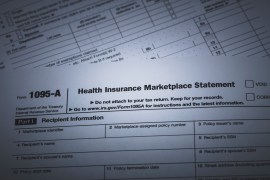More than 2 million people with coverage on the health insurance exchanges may be missing out on subsidies that could lower their deductibles, copayments and maximum out-of-pocket spending limits, according to a new analysis by Avalere Health.
Those who may be missing out are people with incomes between 100 and 250 percent of the federal poverty level ($11,770 to $29,425). Under the health law, people at those income levels are eligible for cost-sharing reductions that can substantially reduce their out-of-pocket costs. But there’s a catch: the reductions are only available to people who buy a silver-level plan.
(Cost-sharing reductions are a different type of subsidy than the premium tax credits that are available to people with incomes up to 400 percent of the poverty level regardless of the type of plan they buy.)
In its analysis of exchange income data for those enrolled in the health insurance marketplaces in 2015, Avalere found that 8.1 million individuals with this coverage had income levels that should have qualified them for cost-sharing reductions. But only 5.9 million received the reductions, which are automatically applied if people enroll in silver-level plans.
Some of those who were eligible probably bought cheaper bronze-level plans, says Elizabeth Carpenter, a vice president at Avalere.
“Surveys show that people shop for plans based on premiums,” Carpenter says. “But if somebody forgoes cost-sharing reductions in order to pay a lower monthly premium and then has an unexpected accident or illness, their out-of-pocket exposure is likely to be higher.”
Silver plans pay 70 percent of medical costs, on average, while bronze plans pay 60 percent.
Consumers with a silver plan are thus responsible for paying 30 percent of their medical costs in deductibles and copayments or coinsurance, up to a maximum of $6,600 for an individual and $13,200 for a family in 2015. Cost-sharing reduction subsidies reduce those out-of-pocket costs. People with incomes that are 150 percent of the federal poverty level or less are on the hook for no more than 6 percent of their costs (instead of 30 percent); those with incomes up to 200 percent of poverty pay no more than 13 percent; and those with incomes up to 250 percent pay 27 percent at most. Consumers who are eligible for cost-sharing reductions also have lower maximum out-of-pocket spending limits.
In 2015, a standard silver plan has a $2,556 average annual deductible for medical and drug costs for single coverage on the federal exchange, according to a Kaiser Family Foundation analysis. (KHN is an editorially independent program of the foundation.) Cost-sharing reductions would cut the average deductible to $2,077 for someone whose income was between 200 and 250 percent of poverty, and to $737 for someone whose income was between 150 to 200 percent of poverty. Someone whose income was 150 percent of poverty or lower would have a deductible of just $229 for a silver plan.
Please contact Kaiser Health News to send comments or ideas for future topics for the Insuring Your Health column.







